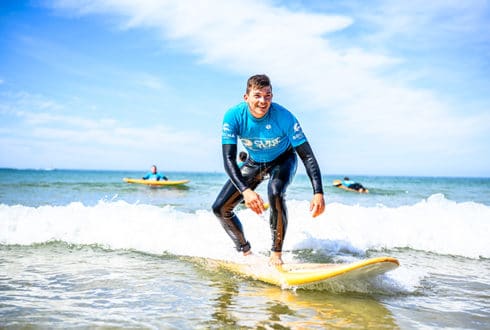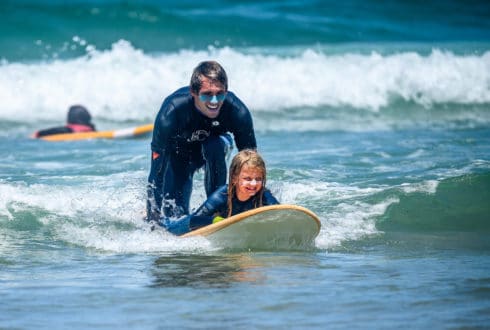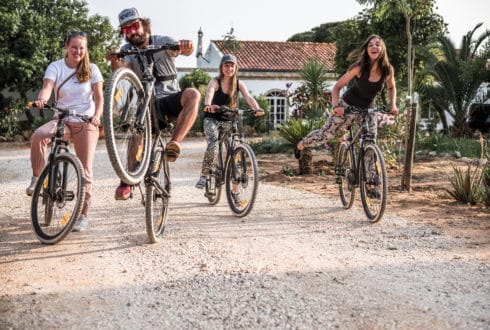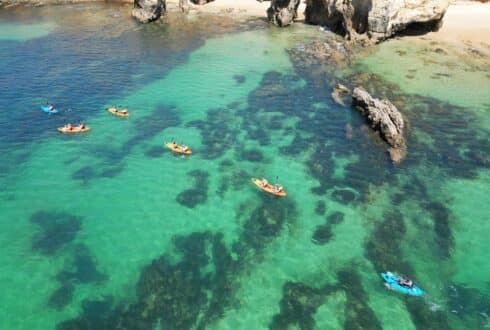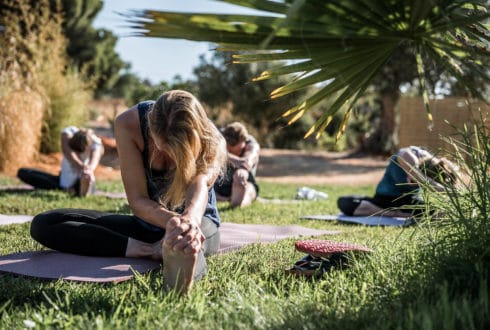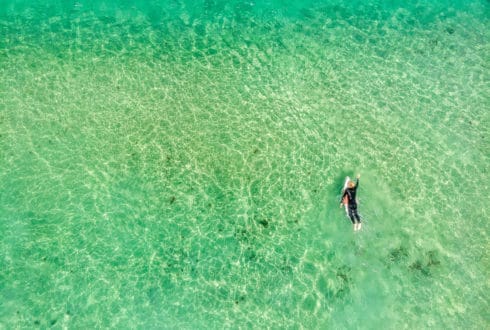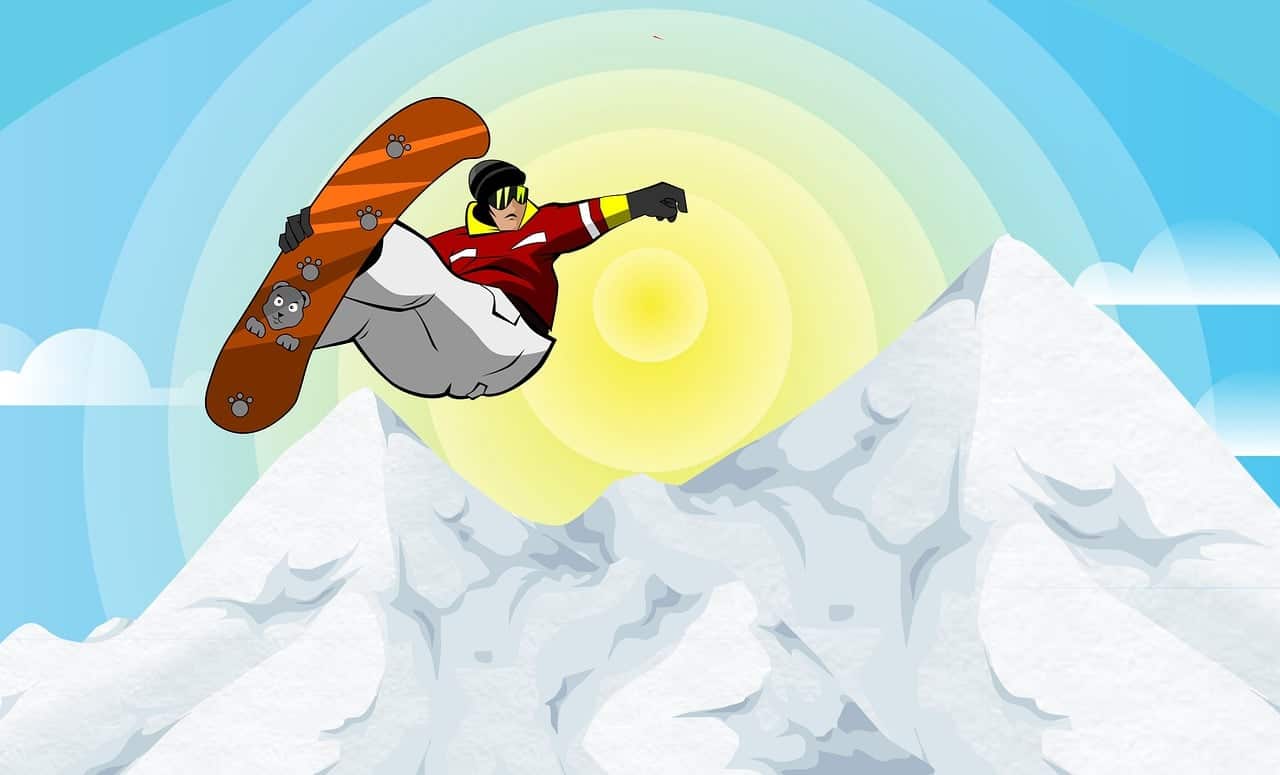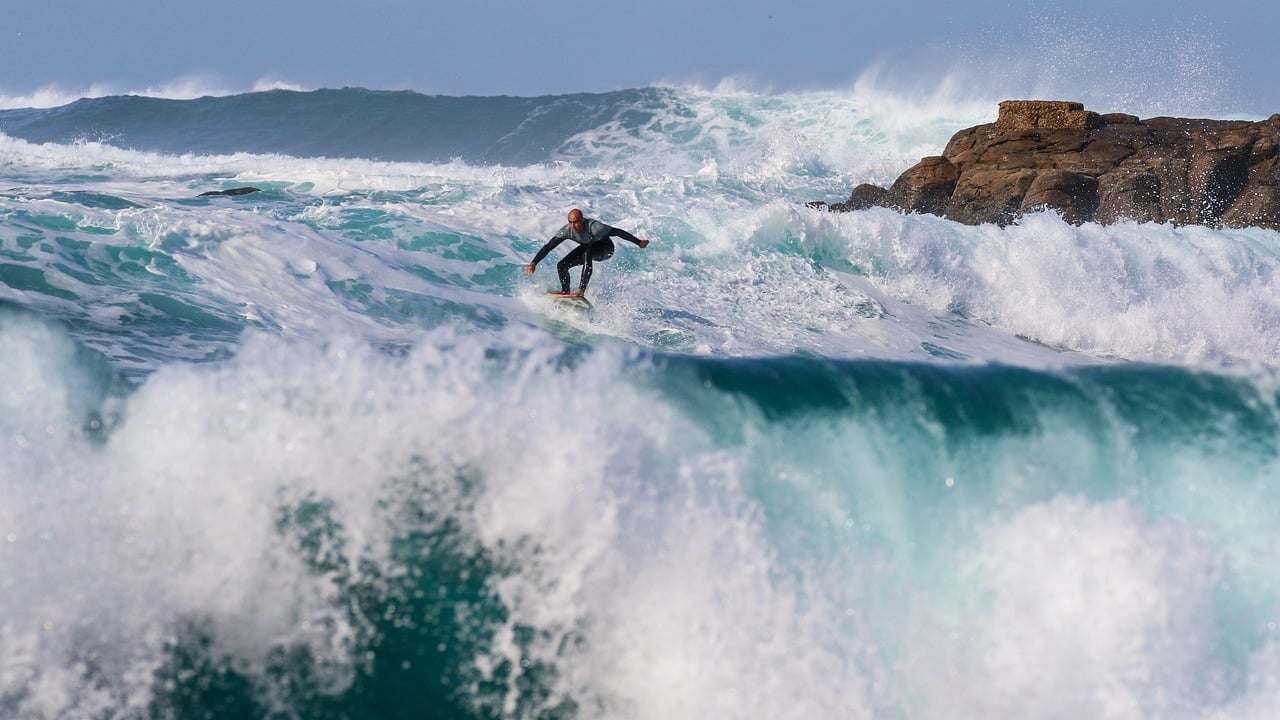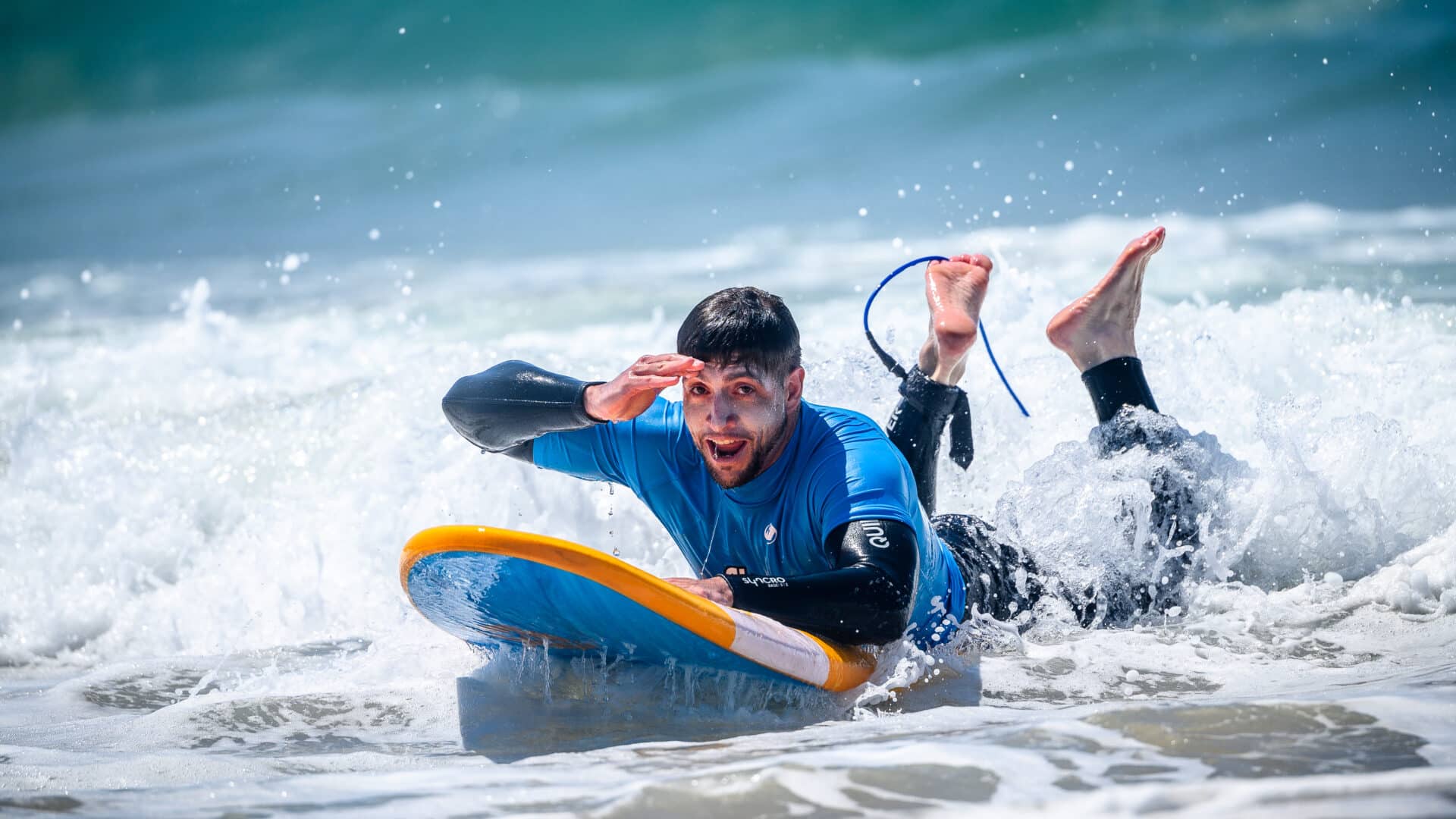Kids
Vitamin Sea, that´s all they need !!
Let the sea set them free !!Experiences
Collect moments not things, have stories to tell not stuff to show!!
Sea you soon, right now !!Rentals
You can´t buy hapinness but you can rent a surfboard !!
The ocean is where I belong, I´m in !!Yoga
“It´s all about where your mind´s at” - K. Slater 11 times world surf champion
Today I work in instead of workout.Ready for us?
Yes, yes yesKayak Tours
The best kayak tour around
Book now :)Surf Lessons
“ The best surfer out there is the one having the most fun” - Phil Edwards
Salty but sweet, I´m ready !!Kids
Vitamin Sea, that´s all they need !!
Let the sea set them free !!Experiences
Collect moments not things, have stories to tell not stuff to show!!
Sea you soon, right now !!Rentals
You can´t buy hapinness but you can rent a surfboard !!
The ocean is where I belong, I´m in !!Yoga
“It´s all about where your mind´s at” - K. Slater 11 times world surf champion
Today I work in instead of workout.Ready for us?
Yes, yes yesKayak Tours
The best kayak tour around
Book now :)Much more than just another surf school
At Future Eco Surf School we aim not only to teach you how to surf, but we also want to share with you our stoke and connection with nature and especially with the ocean. This can be a life-changing and inspiring process if done in a conscious and committed way.
Get to know a typical day with Future Eco Surf School
Sustainability
At Future Eco Surf School we believe we can make a difference.
That together we can do more and better to help create a healthier planet and a fairer society.
Being conscious that with small steps we accomplish a long walk, we are at this stage restructuring our internal and operational procedures and strategies. It will allow us to enjoy nature to the fullest with minimum impact.
Blog
Read the latest on our blog
Surfing and snowboarding, two thrilling board sports, offer enthusiasts the joy of carving through different terrains—one through the waves of the ocean, and the other down snow-covered mountains. While both share a common love for the board, they diverge in several aspects, making each sport a unique experience. Let’s delve into the world of surf and snowboard, comparing the highs, lows, and distinct characteristics of these adrenaline-pumping activities.
1. Nature of the Terrain:
– Surfing: Surfers ride the dynamic and ever-changing waves of the ocean. The sensation of gliding on water and harnessing the energy of the sea is a unique experience that demands a connection with nature and the ocean’s rhythm.
– Snowboarding: Snowboarders, on the other hand, conquer snowy mountain slopes. The smooth, powder-covered landscapes offer a different thrill, where riders carve through snow, executing turns and tricks down the mountain.
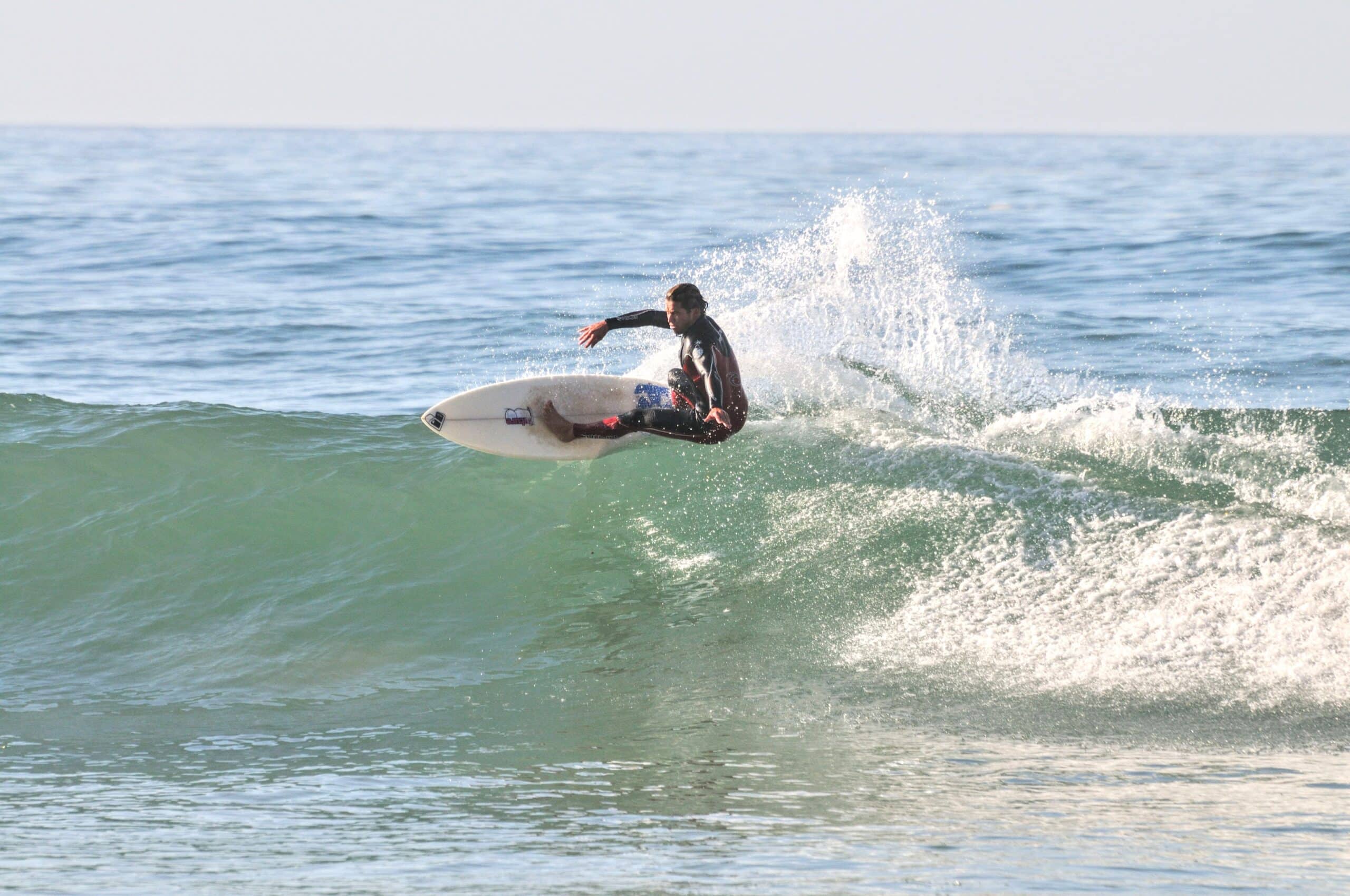
2. Environmental Elements:
– Surfing: The ocean environment introduces surfers to the unpredictability of waves, tides, and weather conditions. Factors like wind and swell direction play a significant role, making each surfing session a distinct encounter with nature.
– Snowboarding: In contrast, snowboarding introduces enthusiasts to the challenges of weather and mountain conditions. Factors like snow quality, temperature, and visibility become crucial elements influencing the snowboarding experience.

3. Equipment:
– Surfing: Surfers rely on a surfboard, leash, and depending on the temperature a wetsuit too . The design and size of the board are tailored to wave-riding, with various shapes suitable for different wave conditions.
– Snowboarding: Snowboarders have a board, boots, and bindings. The snowboard’s design considers the type of terrain, with different shapes for freestyle, freeride, and alpine snowboarding.
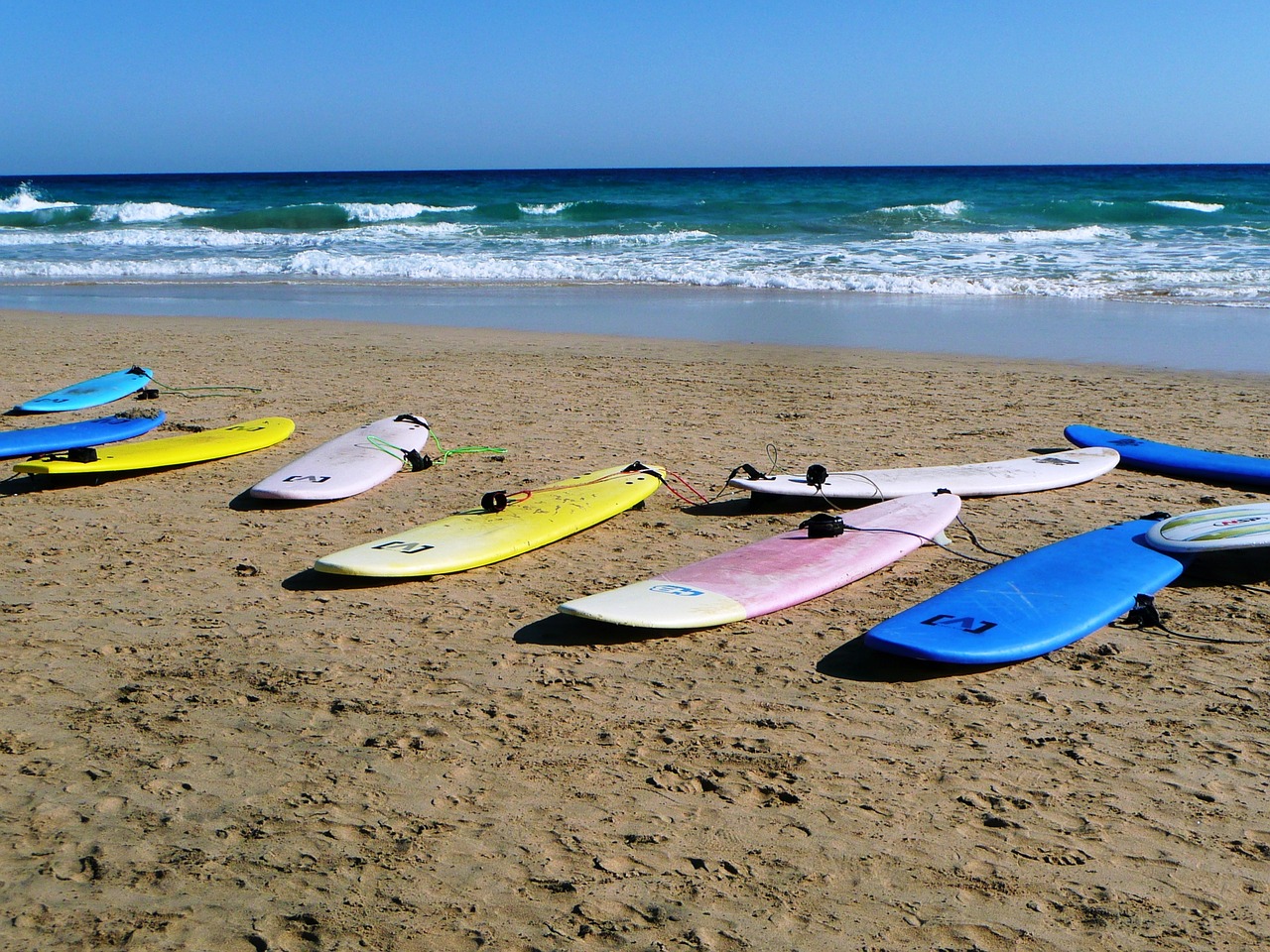
4. Learning Curve:
– Surfing:Beginners often face challenges in mastering the paddling, popping up on the board, and the right timing of catching waves. Balancing on a moving surface adds an extra layer of complexity.
– Snowboarding: Learning to snowboard involves mastering edge control, turning, and navigating various snow conditions. The initial stages may involve some tumbles in the snow.
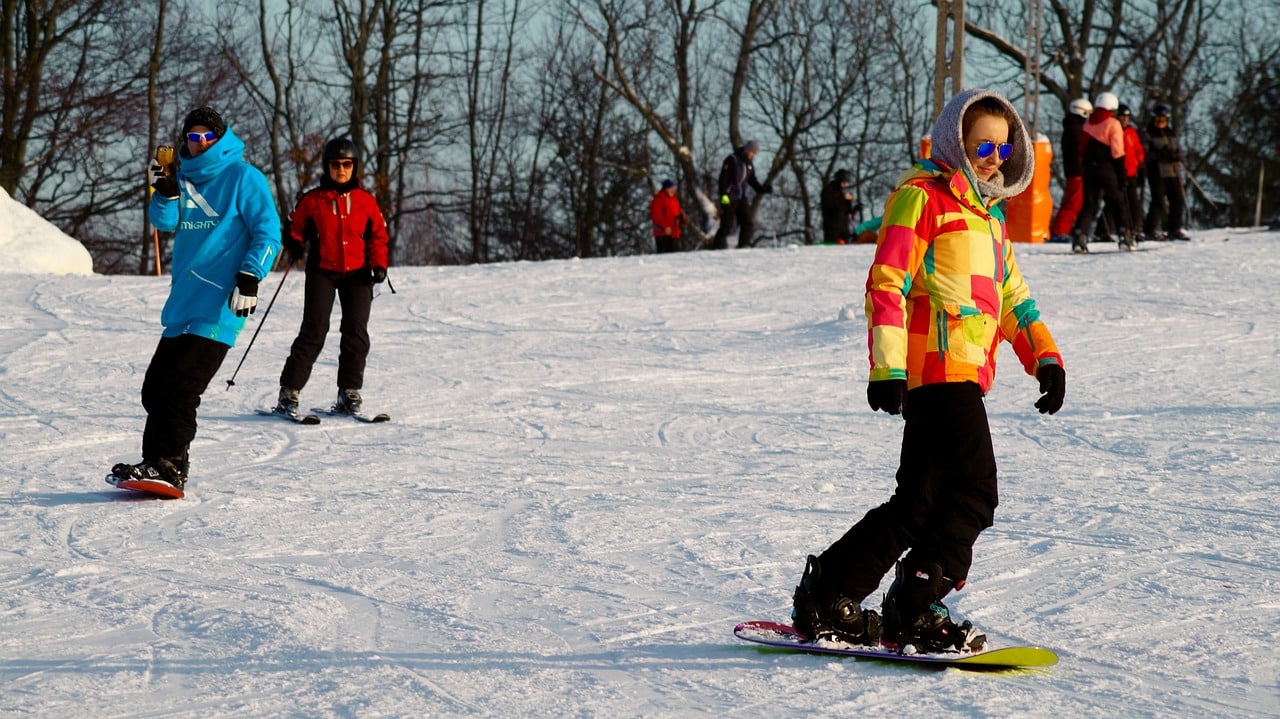
5. Community and Culture:
– Surfing: Surf culture often emphasizes a laid-back, coastal lifestyle. The community is closely connected to beach culture, environmental awareness, and a love for the ocean.
– Snowboarding: Snowboard culture has a mountain-centric vibe. Enthusiasts are drawn to mountain resorts, apres-ski activities, and a shared passion for conquering snowy peaks.

In conclusion, whether you’re drawn to the rhythmic dance with ocean waves or the exhilarating descent down snow-covered slopes, both surfing and snowboarding offer unique experiences. The choice between the two often comes down to personal preference, the environment you love, and the type of adventure that calls to you. Whether it’s the salty breeze of the sea or the crisp mountain air, the joy of riding a board is an experience that transcends terrain.
” [“post_title”]=> string(39) “Riding the Waves vs. Carving the Slopes” [“post_excerpt”]=> string(0) “” [“post_status”]=> string(7) “publish” [“comment_status”]=> string(6) “closed” [“ping_status”]=> string(6) “closed” [“post_password”]=> string(0) “” [“post_name”]=> string(38) “riding-the-waves-vs-carving-the-slopes” [“to_ping”]=> string(0) “” [“pinged”]=> string(0) “” [“post_modified”]=> string(19) “2024-01-30 15:09:23” [“post_modified_gmt”]=> string(19) “2024-01-30 15:09:23” [“post_content_filtered”]=> string(0) “” [“post_parent”]=> int(0) [“guid”]=> string(35) “https://future-ecosurf.com/?p=16697” [“menu_order”]=> int(0) [“post_type”]=> string(4) “post” [“post_mime_type”]=> string(0) “” [“comment_count”]=> string(1) “0” [“filter”]=> string(3) “raw” } [1]=> array(24) { [“ID”]=> int(16500) [“post_author”]=> string(1) “8” [“post_date”]=> string(19) “2024-04-08 10:00:00” [“post_date_gmt”]=> string(19) “2024-04-08 10:00:00” [“post_content”]=> string(7434) “Watching a perfect wave as its peeling down nicely with a clean green face can make you instantly stoked to jump into the water with no thinking but surfing is not just rainbows and butterflies. It’s not a coincidence that surfing is considered as an extreme sport. In this article we will let you know what are the top 5 hazards.
1. Rip current
Rip currents are the top 1 causes of beach rescues for the reason that it is quite hard to identify for those who do not know the ocean very well.
Rip currents are strong, narrow, seaward flows of water that extend from close to the shoreline to outside of the surf zone. They are found on almost any beach with breaking waves and act as “rivers of the sea,” moving offshore the sand, marine organisms, and perhaps unprepared human beings who are unaware and trying to swim or surf in the rip.
Escape plan: It’s very important when we notice that we move offshore not to panic. If we have a board with us , stay on it! It will always float and help us stay above the sea. Make sure we do not paddle against the rip current, only sideways and once we get off the pull try to catch a wave and drink a caipirinha on the shore.
Best way to identify rip currents is from above because that’s how we can see the water flow. Many times it’s a deeper section in between sandbanks so waves are not breaking there. It can have a different color too . Sometimes you can also see the sand or foam moving out with it.
If you are not certain, always ask lifeguards or fellow surfers where there can be rip currents on the beach.
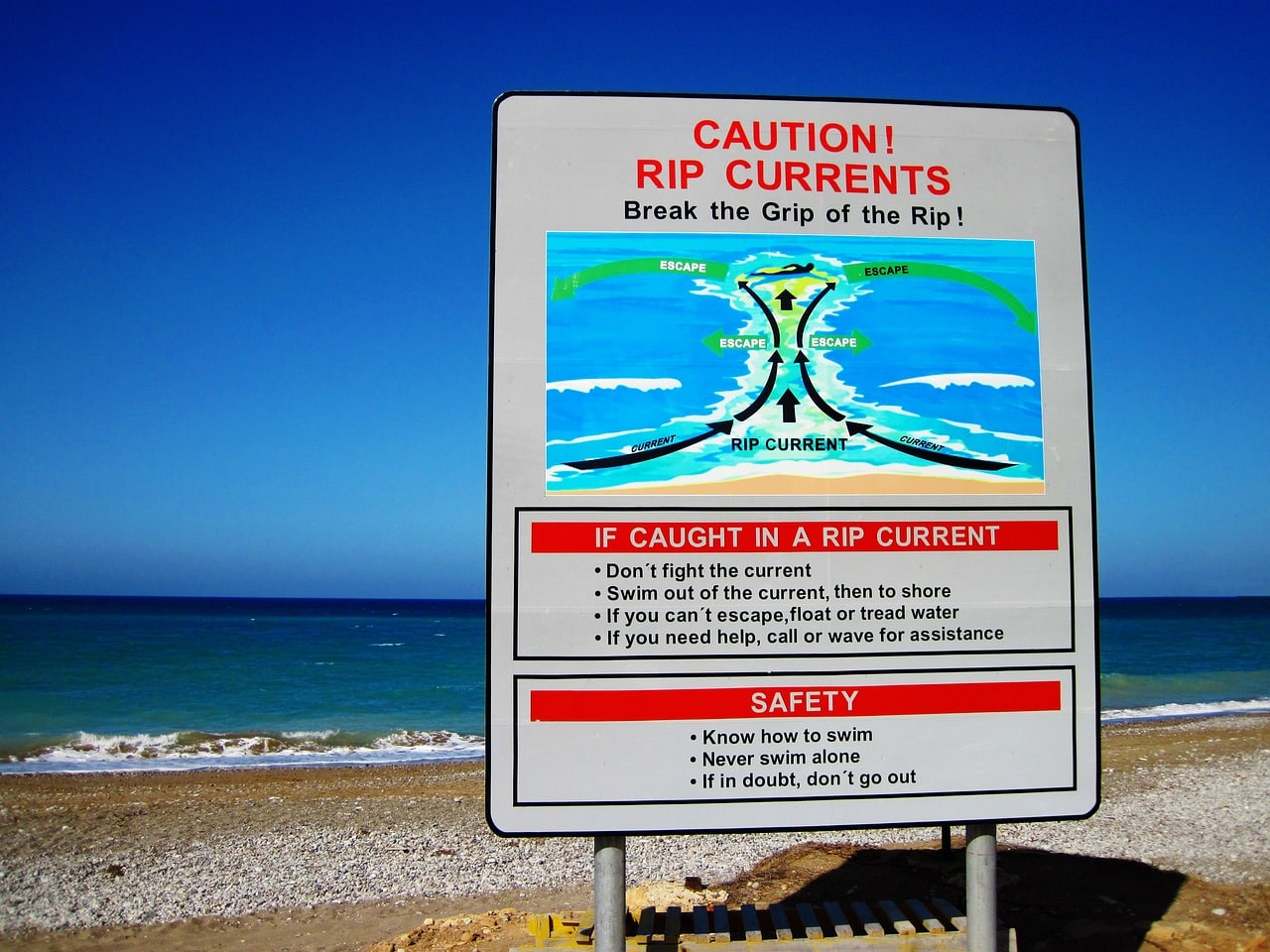
2. Other surfers
Believe it or not but you are not the only person who loves surfing. Often we’re gonna face crowds in the water so make sure you always keep at least 4-5 meters of distance from each other. The worst thing that can happen is being hit by someone else’s surfboard and perhaps being cut by its sharp fins. Follow the surf ethiquette https://www.surfertoday.com/surfing/the-basic-rules-of-surf-etiquette
communicate and stay safe!
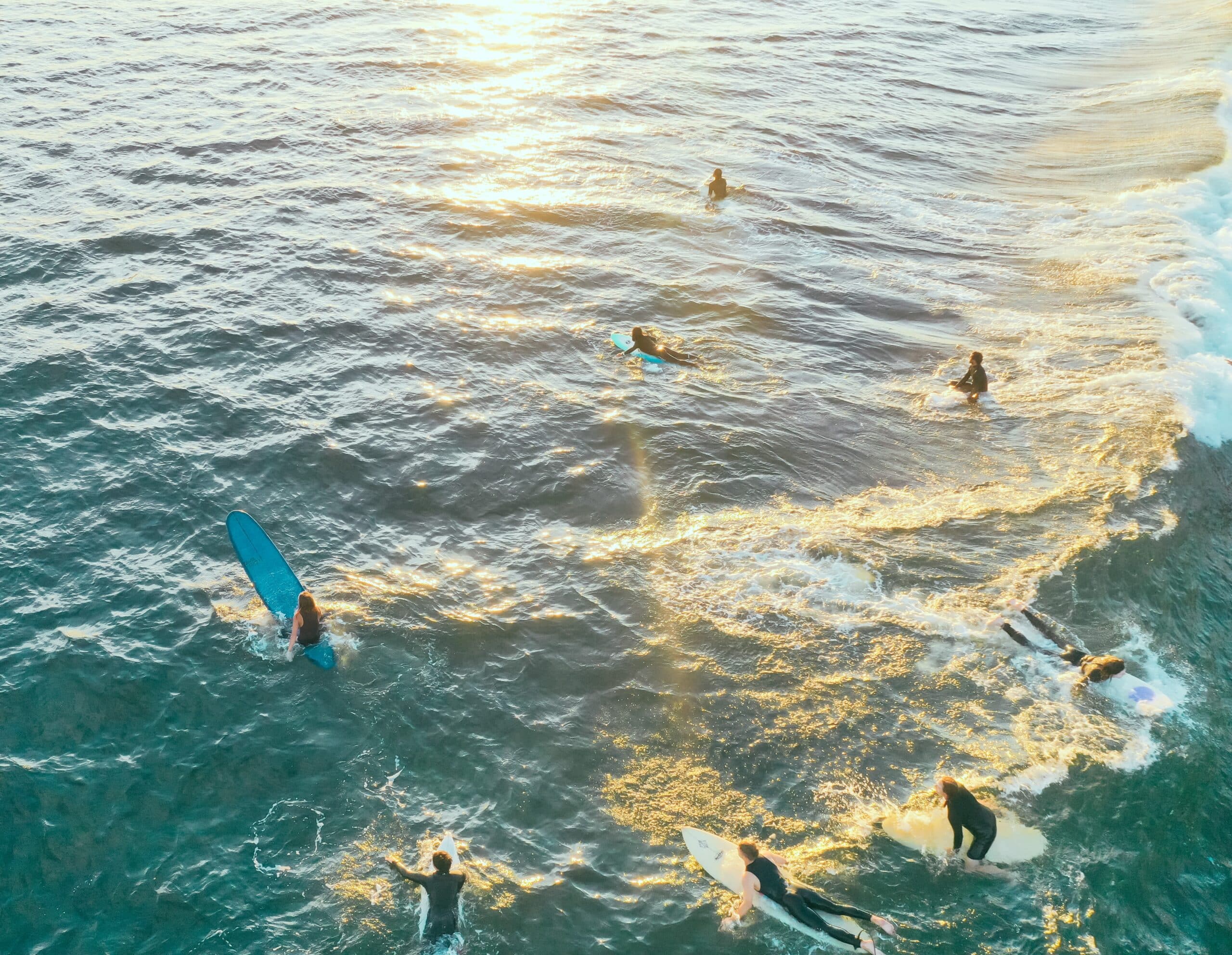
3. Your own board
Especially if you are an inexperienced surfer, you can forget about your own board. Your board in a proper case is attached to you by the leash so when you wipe out the board can hit you . Make sure that after every wipe out you use the safety cover. Put one hand on top of your head, the other on the neck and drive your elbows in to protect your face as well . Do not carry your board by the fins or the leash, it can cut your hand or break your finger easily.
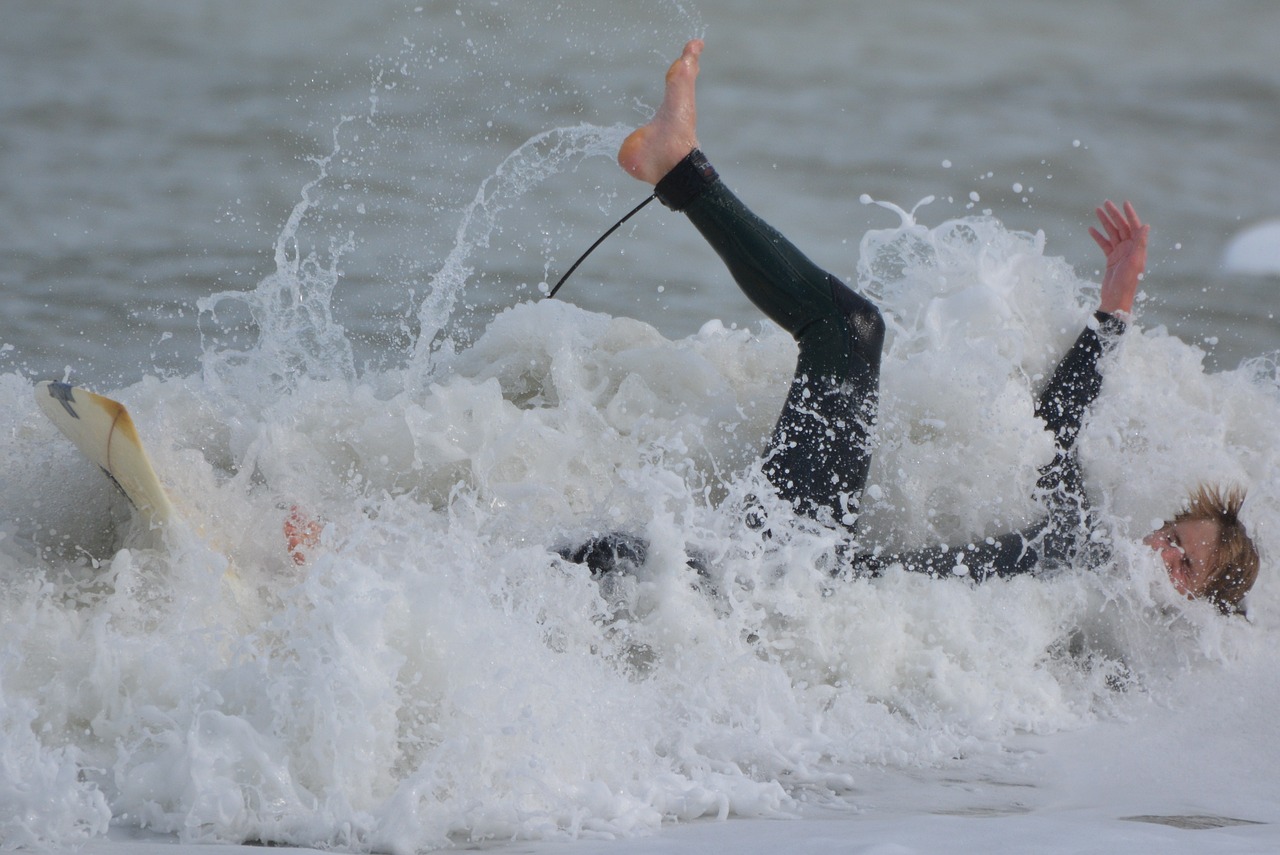
4. Marine life
Here most people are thinking about sharks which is without doubt the scariest animal in the sea. Shark attacks are so rare that the odds are 1 in 3.7 million that you’re gonna meet one.
Actually the most common accident on a surfing lesson is being stinged by a spider fish . As they live under the sand and we might step on them. They sting us and spray poison to our feet. This can feel similar to stepping on glass or pointy rock with a harsh pain . If we notice, the best we can do is to put our feet somewhere hot like the sand or best to boil up water and let our feet there for about 30 minutes. The poison degrades with heat.
Other creatures you can meet in the ocean are jellyfish, seals or sea snakes. Always be aware of your surroundings.
Seek medical attention immediately in case of any injury involving any of these forms of sea life. Remember that no matter how big or small, cute or scary, deadly or playful an ocean-dweller is, he’s in the right. When you take your board into the ocean, you are visiting his home, and you weren’t invited.

5. Submerged objects
Most of the time people who surf reef breaks meet with sharper rocks or corals. Many times they wore boots or helmets to avoid injuries. Since it’s the ocean anything can be around you from rocks to shipwrecks. Best to plan a visit to the beach at low tide so you can see what’s around or ask locals about the surf spot. Always be aware and use your safety cover when falling. Have a surfing buddy who can share the stoke and have an eye on you.
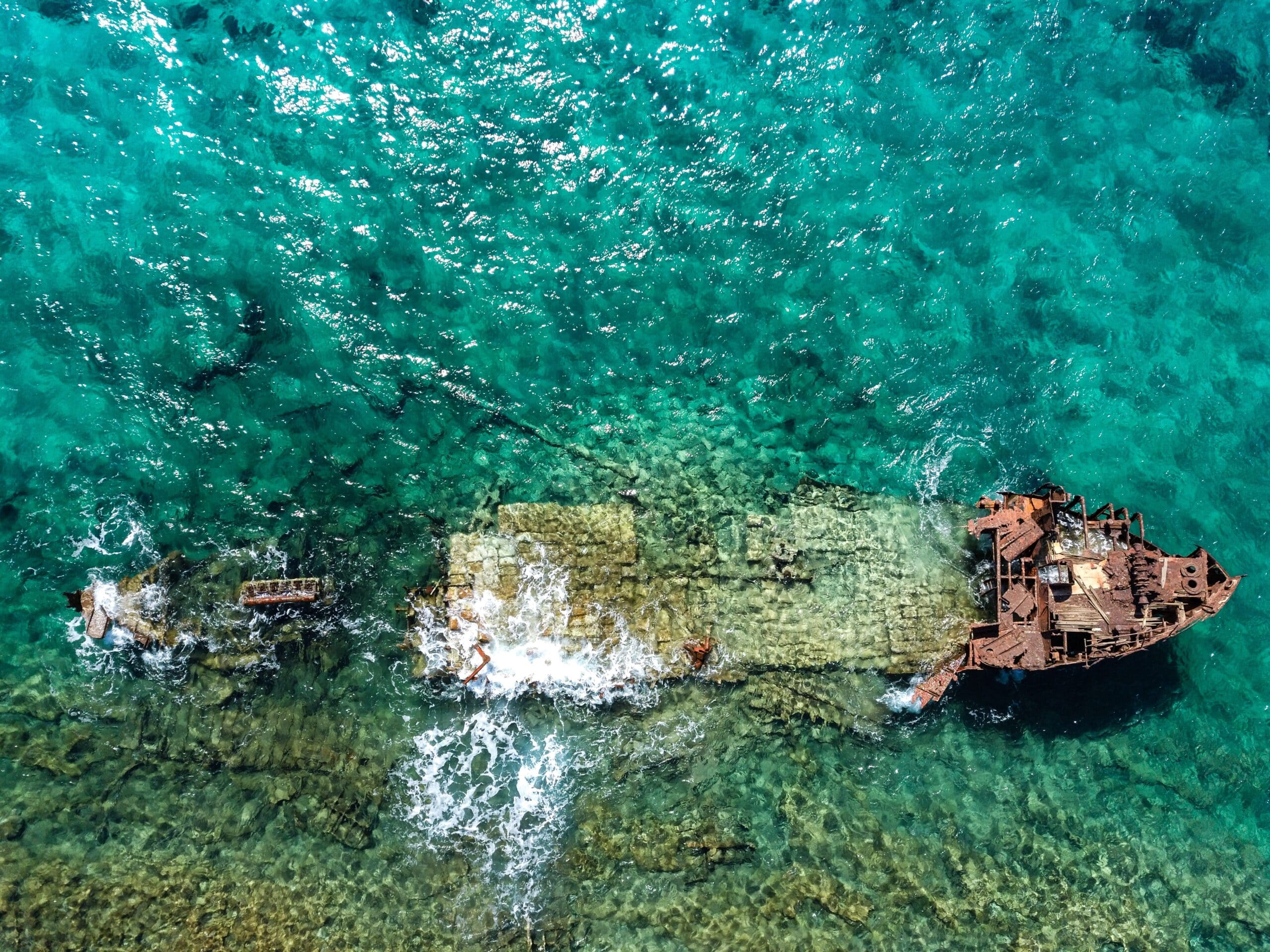
These are the top hazards that we mostly talk about on the surf lessons too. Always be prepared and pay attention before you hit the waves!
” [“post_title”]=> string(28) “The top 5 hazards of surfing” [“post_excerpt”]=> string(0) “” [“post_status”]=> string(7) “publish” [“comment_status”]=> string(6) “closed” [“ping_status”]=> string(6) “closed” [“post_password”]=> string(0) “” [“post_name”]=> string(28) “the-top-5-hazards-of-surfing” [“to_ping”]=> string(0) “” [“pinged”]=> string(0) “” [“post_modified”]=> string(19) “2024-01-30 14:19:40” [“post_modified_gmt”]=> string(19) “2024-01-30 14:19:40” [“post_content_filtered”]=> string(0) “” [“post_parent”]=> int(0) [“guid”]=> string(35) “https://future-ecosurf.com/?p=16500” [“menu_order”]=> int(0) [“post_type”]=> string(4) “post” [“post_mime_type”]=> string(0) “” [“comment_count”]=> string(1) “0” [“filter”]=> string(3) “raw” } [2]=> array(24) { [“ID”]=> int(16641) [“post_author”]=> string(1) “8” [“post_date”]=> string(19) “2024-04-04 10:00:00” [“post_date_gmt”]=> string(19) “2024-04-04 10:00:00” [“post_content”]=> string(7334) “Embarking on the thrilling journey of learning to surf is an exciting venture, filled with the promise of mastering the art of riding the waves. If you’re gearing up for your first surf lesson, it’s natural to feel a mix of anticipation and perhaps a touch of nervousness.
In this beginner’s guide, we’ll walk you through what to expect during your first surf lesson, ensuring you catch your waves with confidence and enthusiasm.
1. Gearing Up:
– Your first surf lesson will likely begin with the selection and fitting of essential gear. Your instructor will provide you with a suitable surfboard and a wetsuit to keep you buoyant and protected from the chilly ocean water.
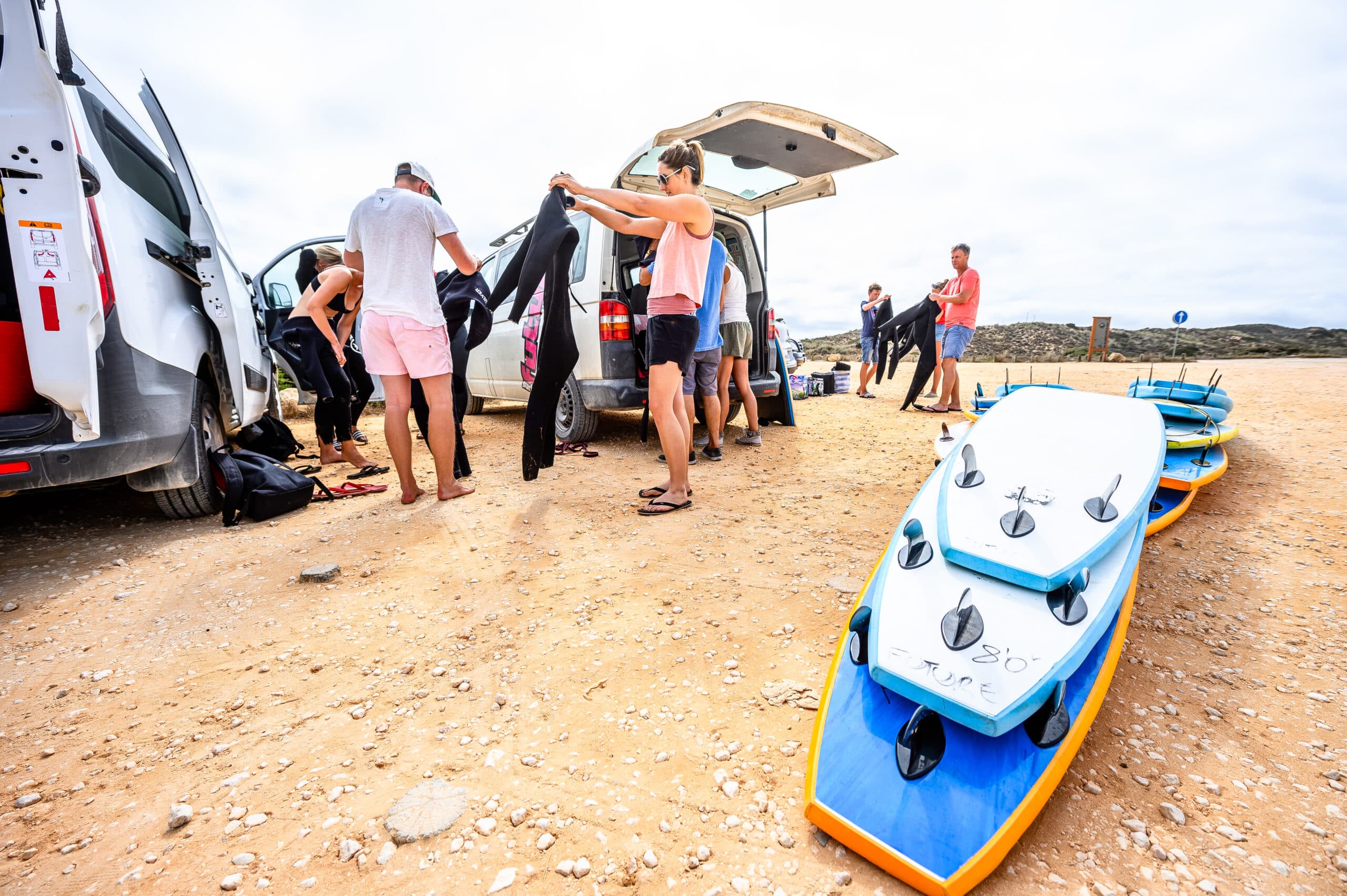
2. Safety First:
– Before hitting the waves, your instructor will cover essential safety guidelines. This includes understanding the ocean conditions, identifying potential hazards, and mastering basic surf etiquette to ensure a safe and enjoyable experience for everyone in the water.
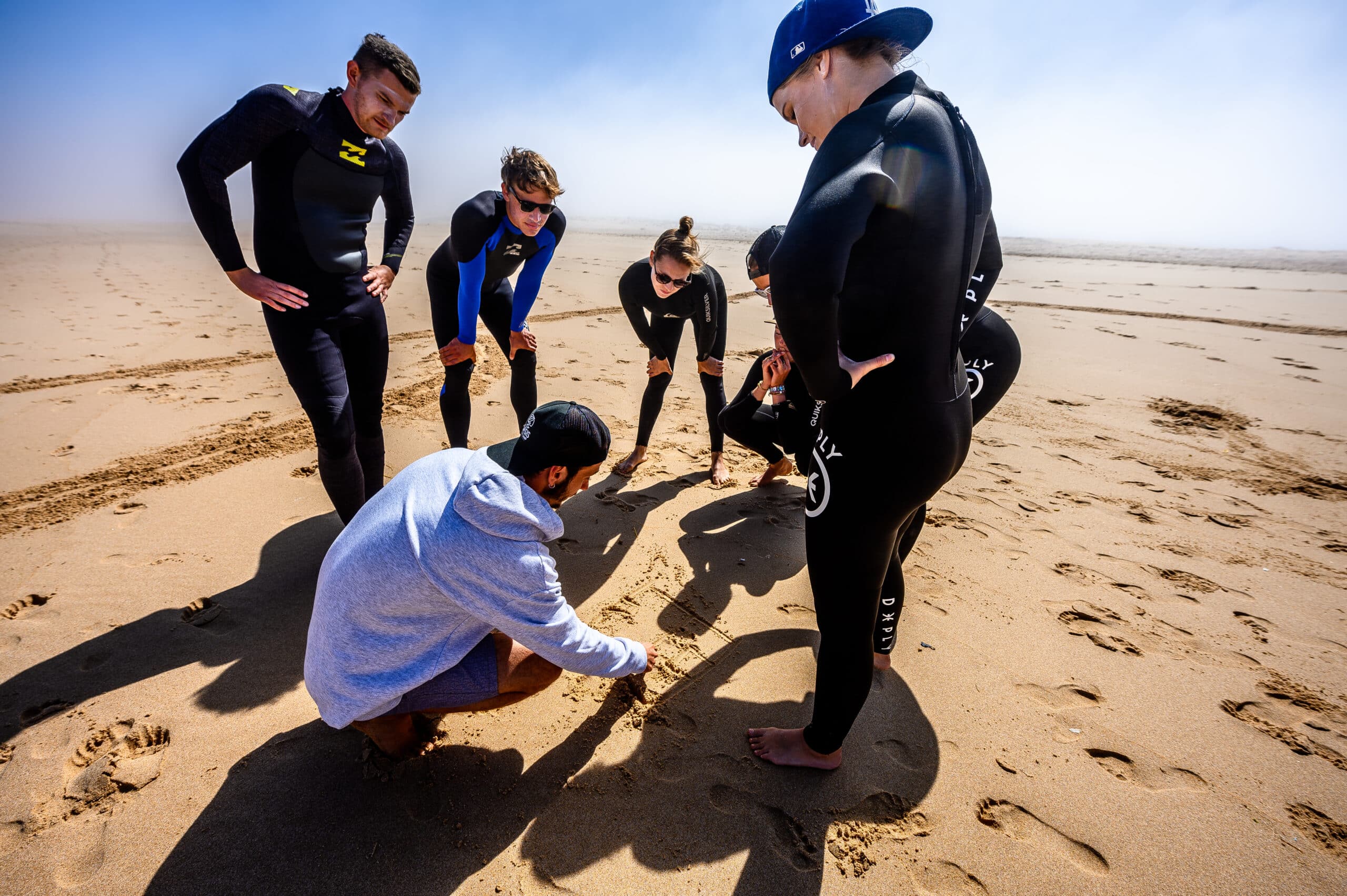
3. The Basics of Paddling:
– Paddling is a fundamental skill in surfing. Your instructor will guide you on how to paddle efficiently on your board, allowing you to navigate the water and catch waves successfully.
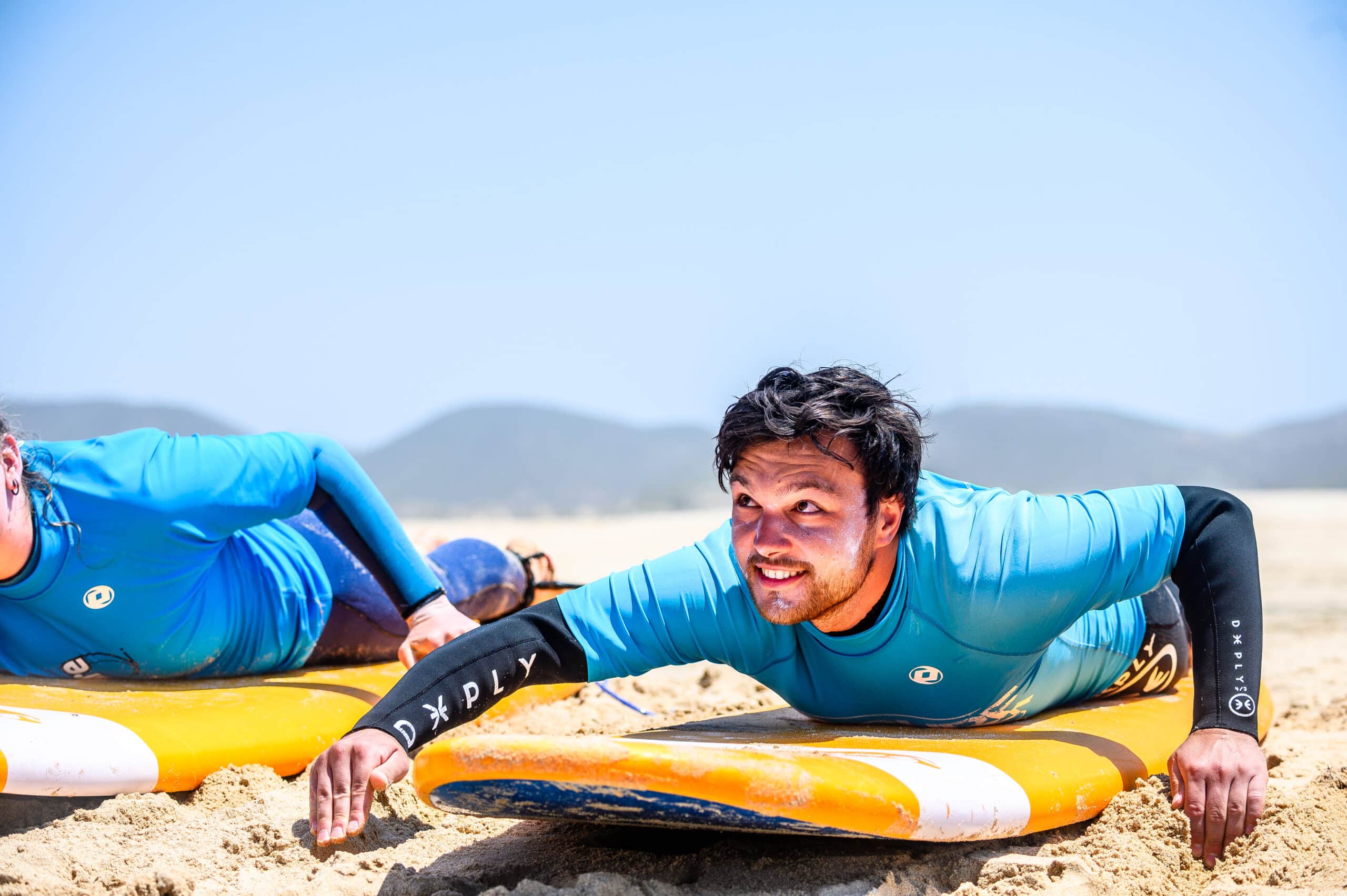
4. Pop-up and finding Your Balance:
– Achieving and maintaining balance on the surfboard is crucial for staying upright on the waves. Your instructor will teach you the proper pop up stance and weight distribution to help you find and maintain your balance while riding the waves.
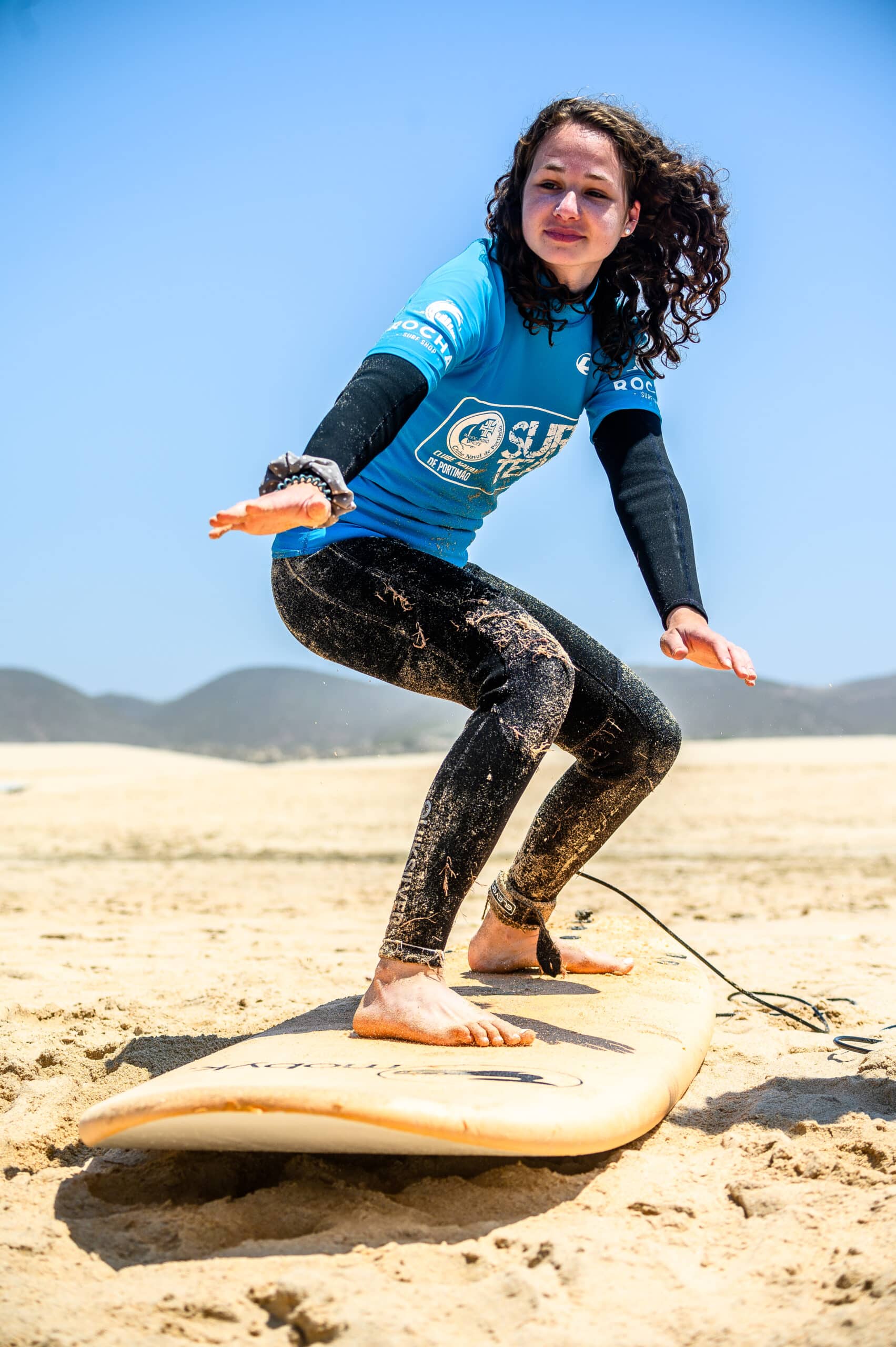
5. Catching Waves:
– The exhilarating moment arrives when it’s time to catch your first wave. Your instructor will guide you on when to paddle, how to position yourself on the board, and the thrilling sensation of riding a wave to shore.

6. Getting Back On:
Falling off the board is part of the learning process. Your instructor will teach you how to safely dismount, retrieve your board, and get back on after a wipeout.
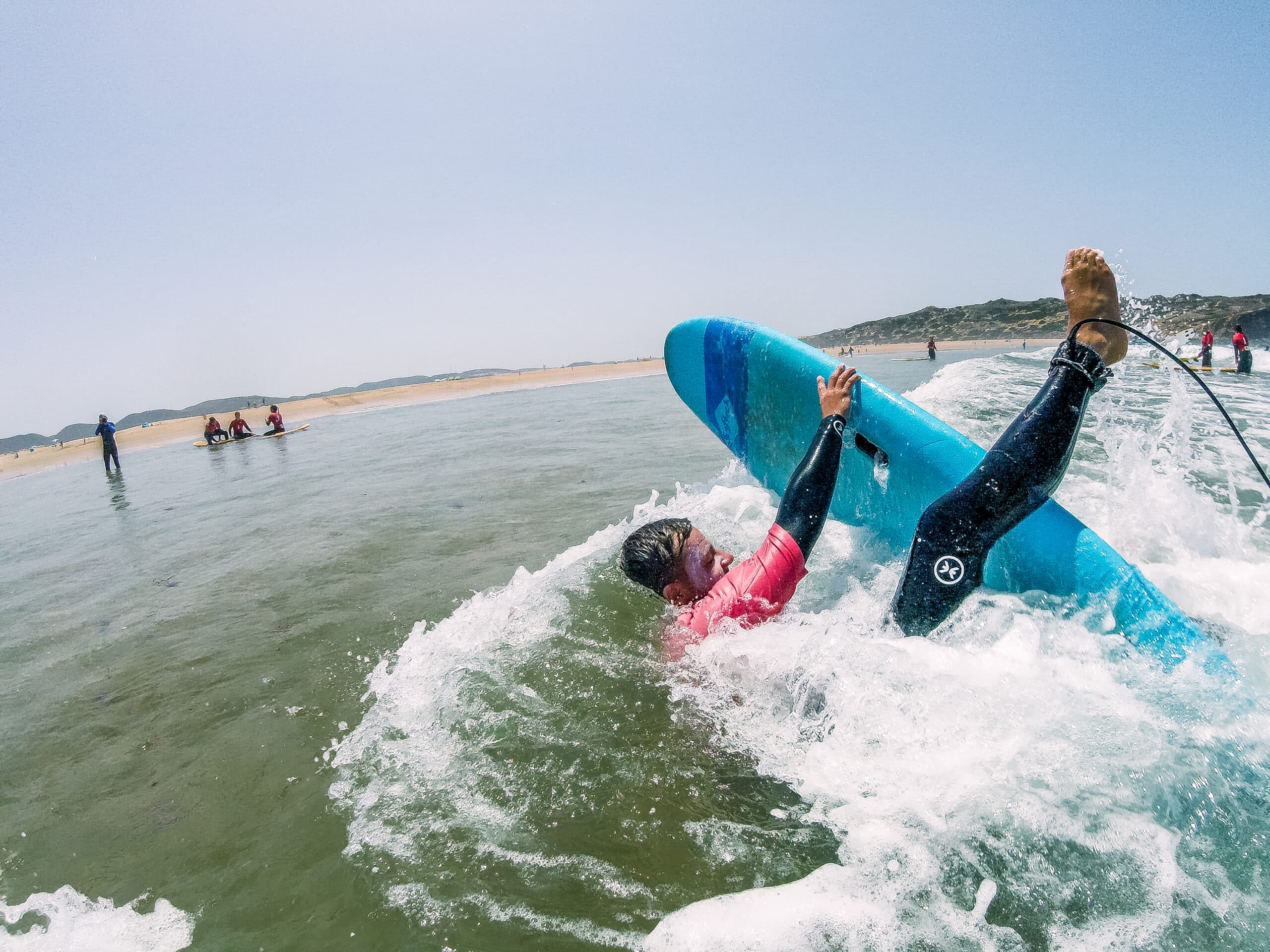
7. Building Confidence:
– Surfing is as much about confidence as it is about skill. Throughout your lesson, your instructor will provide encouragement, constructive feedback, and tips to help you build confidence in the water.
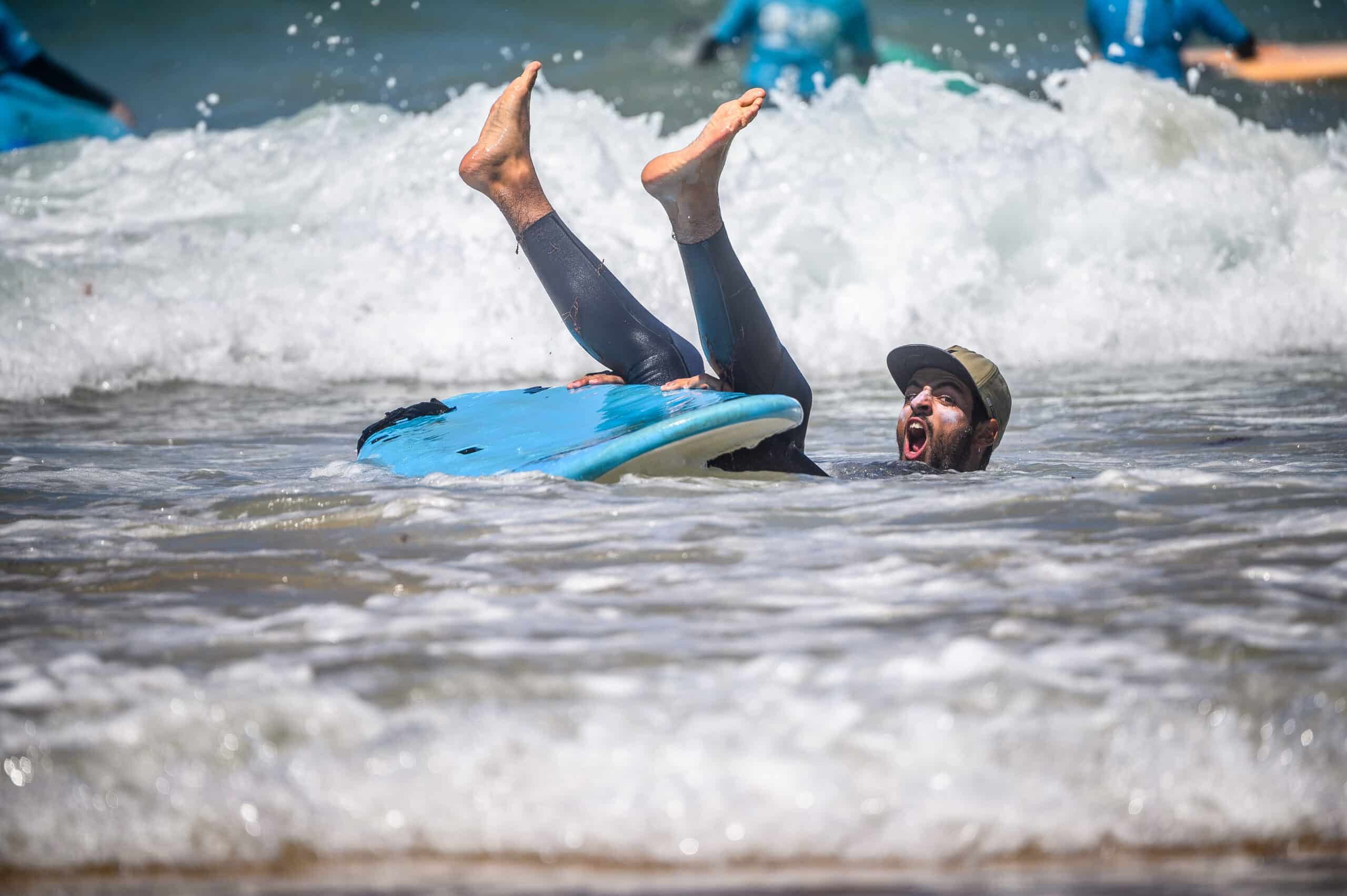
8. The Joy of Progress:
– Surfing is a skill that improves with practice. Your first lesson is just the beginning of your surfing journey. Celebrate small victories, enjoy the process, and savor the joy of progress as you ride more waves in future lessons.
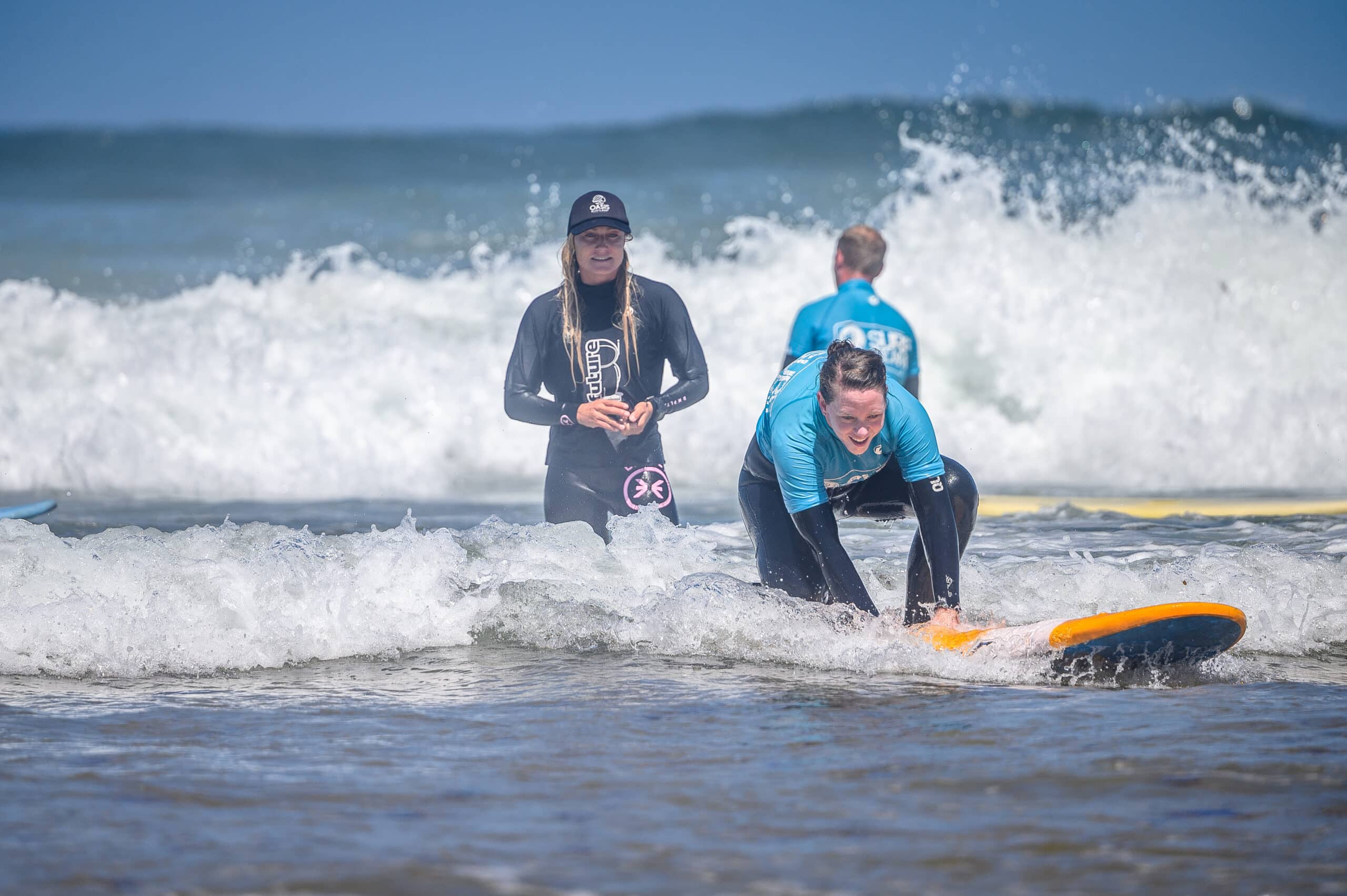
Remember, every surfer started as a beginner, and your surf instructor is there to guide you through the initial stages of your surfing adventure. Embrace the learning experience, enjoy the ocean, and relish the unique joy that comes with catching your first wave.
Welcome to the incredible world of surfing!
” [“post_title”]=> string(40) “What to Expect in Your First Surf Lesson” [“post_excerpt”]=> string(0) “” [“post_status”]=> string(7) “publish” [“comment_status”]=> string(6) “closed” [“ping_status”]=> string(6) “closed” [“post_password”]=> string(0) “” [“post_name”]=> string(40) “what-to-expect-in-your-first-surf-lesson” [“to_ping”]=> string(0) “” [“pinged”]=> string(0) “” [“post_modified”]=> string(19) “2024-01-29 16:28:36” [“post_modified_gmt”]=> string(19) “2024-01-29 16:28:36” [“post_content_filtered”]=> string(0) “” [“post_parent”]=> int(0) [“guid”]=> string(35) “https://future-ecosurf.com/?p=16641” [“menu_order”]=> int(0) [“post_type”]=> string(4) “post” [“post_mime_type”]=> string(0) “” [“comment_count”]=> string(1) “0” [“filter”]=> string(3) “raw” } }Surfing and snowboarding, two thrilling board sports, offer enthusiasts the joy of carving through different terrains—one through the waves of the ocean, and the other down snow-covered mountains. While both share a common love for the board, they diverge in several aspects, making each sport a unique experience. Let’s delve into the world of surf and snowboard, comparing the highs, lows, and distinct characteristics of these adrenaline-pumping activities.
1. Nature of the Terrain:
– Surfing: Surfers ride the dynamic and ever-changing waves of the ocean. The sensation of gliding on water and harnessing the energy of the sea is a unique experience that demands a connection with nature and the ocean’s rhythm.
– Snowboarding: Snowboarders, on the other hand, conquer snowy mountain slopes. The smooth, powder-covered landscapes offer a different thrill, where riders carve through snow, executing turns and tricks down the mountain.

2. Environmental Elements:
– Surfing: The ocean environment introduces surfers to the unpredictability of waves, tides, and weather conditions. Factors like wind and swell direction play a significant role, making each surfing session a distinct encounter with nature.
– Snowboarding: In contrast, snowboarding introduces enthusiasts to the challenges of weather and mountain conditions. Factors like snow quality, temperature, and visibility become crucial elements influencing the snowboarding experience.

3. Equipment:
– Surfing: Surfers rely on a surfboard, leash, and depending on the temperature a wetsuit too . The design and size of the board are tailored to wave-riding, with various shapes suitable for different wave conditions.
– Snowboarding: Snowboarders have a board, boots, and bindings. The snowboard’s design considers the type of terrain, with different shapes for freestyle, freeride, and alpine snowboarding.

4. Learning Curve:
– Surfing:Beginners often face challenges in mastering the paddling, popping up on the board, and the right timing of catching waves. Balancing on a moving surface adds an extra layer of complexity.
– Snowboarding: Learning to snowboard involves mastering edge control, turning, and navigating various snow conditions. The initial stages may involve some tumbles in the snow.

5. Community and Culture:
– Surfing: Surf culture often emphasizes a laid-back, coastal lifestyle. The community is closely connected to beach culture, environmental awareness, and a love for the ocean.
– Snowboarding: Snowboard culture has a mountain-centric vibe. Enthusiasts are drawn to mountain resorts, apres-ski activities, and a shared passion for conquering snowy peaks.

In conclusion, whether you’re drawn to the rhythmic dance with ocean waves or the exhilarating descent down snow-covered slopes, both surfing and snowboarding offer unique experiences. The choice between the two often comes down to personal preference, the environment you love, and the type of adventure that calls to you. Whether it’s the salty breeze of the sea or the crisp mountain air, the joy of riding a board is an experience that transcends terrain.
” [“post_title”]=> string(39) “Riding the Waves vs. Carving the Slopes” [“post_excerpt”]=> string(0) “” [“post_status”]=> string(7) “publish” [“comment_status”]=> string(6) “closed” [“ping_status”]=> string(6) “closed” [“post_password”]=> string(0) “” [“post_name”]=> string(38) “riding-the-waves-vs-carving-the-slopes” [“to_ping”]=> string(0) “” [“pinged”]=> string(0) “” [“post_modified”]=> string(19) “2024-01-30 15:09:23” [“post_modified_gmt”]=> string(19) “2024-01-30 15:09:23” [“post_content_filtered”]=> string(0) “” [“post_parent”]=> int(0) [“guid”]=> string(35) “https://future-ecosurf.com/?p=16697” [“menu_order”]=> int(0) [“post_type”]=> string(4) “post” [“post_mime_type”]=> string(0) “” [“comment_count”]=> string(1) “0” [“filter”]=> string(3) “raw” } [1]=> array(24) { [“ID”]=> int(16500) [“post_author”]=> string(1) “8” [“post_date”]=> string(19) “2024-04-08 10:00:00” [“post_date_gmt”]=> string(19) “2024-04-08 10:00:00” [“post_content”]=> string(7434) “Watching a perfect wave as its peeling down nicely with a clean green face can make you instantly stoked to jump into the water with no thinking but surfing is not just rainbows and butterflies. It’s not a coincidence that surfing is considered as an extreme sport. In this article we will let you know what are the top 5 hazards.
1. Rip current
Rip currents are the top 1 causes of beach rescues for the reason that it is quite hard to identify for those who do not know the ocean very well.
Rip currents are strong, narrow, seaward flows of water that extend from close to the shoreline to outside of the surf zone. They are found on almost any beach with breaking waves and act as “rivers of the sea,” moving offshore the sand, marine organisms, and perhaps unprepared human beings who are unaware and trying to swim or surf in the rip.
Escape plan: It’s very important when we notice that we move offshore not to panic. If we have a board with us , stay on it! It will always float and help us stay above the sea. Make sure we do not paddle against the rip current, only sideways and once we get off the pull try to catch a wave and drink a caipirinha on the shore.
Best way to identify rip currents is from above because that’s how we can see the water flow. Many times it’s a deeper section in between sandbanks so waves are not breaking there. It can have a different color too . Sometimes you can also see the sand or foam moving out with it.
If you are not certain, always ask lifeguards or fellow surfers where there can be rip currents on the beach.

2. Other surfers
Believe it or not but you are not the only person who loves surfing. Often we’re gonna face crowds in the water so make sure you always keep at least 4-5 meters of distance from each other. The worst thing that can happen is being hit by someone else’s surfboard and perhaps being cut by its sharp fins. Follow the surf ethiquette https://www.surfertoday.com/surfing/the-basic-rules-of-surf-etiquette
communicate and stay safe!

3. Your own board
Especially if you are an inexperienced surfer, you can forget about your own board. Your board in a proper case is attached to you by the leash so when you wipe out the board can hit you . Make sure that after every wipe out you use the safety cover. Put one hand on top of your head, the other on the neck and drive your elbows in to protect your face as well . Do not carry your board by the fins or the leash, it can cut your hand or break your finger easily.

4. Marine life
Here most people are thinking about sharks which is without doubt the scariest animal in the sea. Shark attacks are so rare that the odds are 1 in 3.7 million that you’re gonna meet one.
Actually the most common accident on a surfing lesson is being stinged by a spider fish . As they live under the sand and we might step on them. They sting us and spray poison to our feet. This can feel similar to stepping on glass or pointy rock with a harsh pain . If we notice, the best we can do is to put our feet somewhere hot like the sand or best to boil up water and let our feet there for about 30 minutes. The poison degrades with heat.
Other creatures you can meet in the ocean are jellyfish, seals or sea snakes. Always be aware of your surroundings.
Seek medical attention immediately in case of any injury involving any of these forms of sea life. Remember that no matter how big or small, cute or scary, deadly or playful an ocean-dweller is, he’s in the right. When you take your board into the ocean, you are visiting his home, and you weren’t invited.

5. Submerged objects
Most of the time people who surf reef breaks meet with sharper rocks or corals. Many times they wore boots or helmets to avoid injuries. Since it’s the ocean anything can be around you from rocks to shipwrecks. Best to plan a visit to the beach at low tide so you can see what’s around or ask locals about the surf spot. Always be aware and use your safety cover when falling. Have a surfing buddy who can share the stoke and have an eye on you.

These are the top hazards that we mostly talk about on the surf lessons too. Always be prepared and pay attention before you hit the waves!
” [“post_title”]=> string(28) “The top 5 hazards of surfing” [“post_excerpt”]=> string(0) “” [“post_status”]=> string(7) “publish” [“comment_status”]=> string(6) “closed” [“ping_status”]=> string(6) “closed” [“post_password”]=> string(0) “” [“post_name”]=> string(28) “the-top-5-hazards-of-surfing” [“to_ping”]=> string(0) “” [“pinged”]=> string(0) “” [“post_modified”]=> string(19) “2024-01-30 14:19:40” [“post_modified_gmt”]=> string(19) “2024-01-30 14:19:40” [“post_content_filtered”]=> string(0) “” [“post_parent”]=> int(0) [“guid”]=> string(35) “https://future-ecosurf.com/?p=16500” [“menu_order”]=> int(0) [“post_type”]=> string(4) “post” [“post_mime_type”]=> string(0) “” [“comment_count”]=> string(1) “0” [“filter”]=> string(3) “raw” } [2]=> array(24) { [“ID”]=> int(16641) [“post_author”]=> string(1) “8” [“post_date”]=> string(19) “2024-04-04 10:00:00” [“post_date_gmt”]=> string(19) “2024-04-04 10:00:00” [“post_content”]=> string(7334) “Embarking on the thrilling journey of learning to surf is an exciting venture, filled with the promise of mastering the art of riding the waves. If you’re gearing up for your first surf lesson, it’s natural to feel a mix of anticipation and perhaps a touch of nervousness.
In this beginner’s guide, we’ll walk you through what to expect during your first surf lesson, ensuring you catch your waves with confidence and enthusiasm.
1. Gearing Up:
– Your first surf lesson will likely begin with the selection and fitting of essential gear. Your instructor will provide you with a suitable surfboard and a wetsuit to keep you buoyant and protected from the chilly ocean water.

2. Safety First:
– Before hitting the waves, your instructor will cover essential safety guidelines. This includes understanding the ocean conditions, identifying potential hazards, and mastering basic surf etiquette to ensure a safe and enjoyable experience for everyone in the water.

3. The Basics of Paddling:
– Paddling is a fundamental skill in surfing. Your instructor will guide you on how to paddle efficiently on your board, allowing you to navigate the water and catch waves successfully.

4. Pop-up and finding Your Balance:
– Achieving and maintaining balance on the surfboard is crucial for staying upright on the waves. Your instructor will teach you the proper pop up stance and weight distribution to help you find and maintain your balance while riding the waves.

5. Catching Waves:
– The exhilarating moment arrives when it’s time to catch your first wave. Your instructor will guide you on when to paddle, how to position yourself on the board, and the thrilling sensation of riding a wave to shore.

6. Getting Back On:
Falling off the board is part of the learning process. Your instructor will teach you how to safely dismount, retrieve your board, and get back on after a wipeout.

7. Building Confidence:
– Surfing is as much about confidence as it is about skill. Throughout your lesson, your instructor will provide encouragement, constructive feedback, and tips to help you build confidence in the water.

8. The Joy of Progress:
– Surfing is a skill that improves with practice. Your first lesson is just the beginning of your surfing journey. Celebrate small victories, enjoy the process, and savor the joy of progress as you ride more waves in future lessons.

Remember, every surfer started as a beginner, and your surf instructor is there to guide you through the initial stages of your surfing adventure. Embrace the learning experience, enjoy the ocean, and relish the unique joy that comes with catching your first wave.
Welcome to the incredible world of surfing!
” [“post_title”]=> string(40) “What to Expect in Your First Surf Lesson” [“post_excerpt”]=> string(0) “” [“post_status”]=> string(7) “publish” [“comment_status”]=> string(6) “closed” [“ping_status”]=> string(6) “closed” [“post_password”]=> string(0) “” [“post_name”]=> string(40) “what-to-expect-in-your-first-surf-lesson” [“to_ping”]=> string(0) “” [“pinged”]=> string(0) “” [“post_modified”]=> string(19) “2024-01-29 16:28:36” [“post_modified_gmt”]=> string(19) “2024-01-29 16:28:36” [“post_content_filtered”]=> string(0) “” [“post_parent”]=> int(0) [“guid”]=> string(35) “https://future-ecosurf.com/?p=16641” [“menu_order”]=> int(0) [“post_type”]=> string(4) “post” [“post_mime_type”]=> string(0) “” [“comment_count”]=> string(1) “0” [“filter”]=> string(3) “raw” } }Surfing and snowboarding, two thrilling board sports, offer enthusiasts the joy of carving through different terrains—one through the waves of the ocean, and the other down snow-covered mountains. While both share a common love for the board, they diverge in several aspects, making each sport a unique experience. Let’s delve into the world of surf and snowboard, comparing the highs, lows, and distinct characteristics of these adrenaline-pumping activities.
1. Nature of the Terrain:
– Surfing: Surfers ride the dynamic and ever-changing waves of the ocean. The sensation of gliding on water and harnessing the energy of the sea is a unique experience that demands a connection with nature and the ocean’s rhythm.
– Snowboarding: Snowboarders, on the other hand, conquer snowy mountain slopes. The smooth, powder-covered landscapes offer a different thrill, where riders carve through snow, executing turns and tricks down the mountain.

2. Environmental Elements:
– Surfing: The ocean environment introduces surfers to the unpredictability of waves, tides, and weather conditions. Factors like wind and swell direction play a significant role, making each surfing session a distinct encounter with nature.
– Snowboarding: In contrast, snowboarding introduces enthusiasts to the challenges of weather and mountain conditions. Factors like snow quality, temperature, and visibility become crucial elements influencing the snowboarding experience.

3. Equipment:
– Surfing: Surfers rely on a surfboard, leash, and depending on the temperature a wetsuit too . The design and size of the board are tailored to wave-riding, with various shapes suitable for different wave conditions.
– Snowboarding: Snowboarders have a board, boots, and bindings. The snowboard’s design considers the type of terrain, with different shapes for freestyle, freeride, and alpine snowboarding.

4. Learning Curve:
– Surfing:Beginners often face challenges in mastering the paddling, popping up on the board, and the right timing of catching waves. Balancing on a moving surface adds an extra layer of complexity.
– Snowboarding: Learning to snowboard involves mastering edge control, turning, and navigating various snow conditions. The initial stages may involve some tumbles in the snow.

5. Community and Culture:
– Surfing: Surf culture often emphasizes a laid-back, coastal lifestyle. The community is closely connected to beach culture, environmental awareness, and a love for the ocean.
– Snowboarding: Snowboard culture has a mountain-centric vibe. Enthusiasts are drawn to mountain resorts, apres-ski activities, and a shared passion for conquering snowy peaks.

In conclusion, whether you’re drawn to the rhythmic dance with ocean waves or the exhilarating descent down snow-covered slopes, both surfing and snowboarding offer unique experiences. The choice between the two often comes down to personal preference, the environment you love, and the type of adventure that calls to you. Whether it’s the salty breeze of the sea or the crisp mountain air, the joy of riding a board is an experience that transcends terrain.
” [“post_title”]=> string(39) “Riding the Waves vs. Carving the Slopes” [“post_excerpt”]=> string(0) “” [“post_status”]=> string(7) “publish” [“comment_status”]=> string(6) “closed” [“ping_status”]=> string(6) “closed” [“post_password”]=> string(0) “” [“post_name”]=> string(38) “riding-the-waves-vs-carving-the-slopes” [“to_ping”]=> string(0) “” [“pinged”]=> string(0) “” [“post_modified”]=> string(19) “2024-01-30 15:09:23” [“post_modified_gmt”]=> string(19) “2024-01-30 15:09:23” [“post_content_filtered”]=> string(0) “” [“post_parent”]=> int(0) [“guid”]=> string(35) “https://future-ecosurf.com/?p=16697” [“menu_order”]=> int(0) [“post_type”]=> string(4) “post” [“post_mime_type”]=> string(0) “” [“comment_count”]=> string(1) “0” [“filter”]=> string(3) “raw” } [1]=> array(24) { [“ID”]=> int(16500) [“post_author”]=> string(1) “8” [“post_date”]=> string(19) “2024-04-08 10:00:00” [“post_date_gmt”]=> string(19) “2024-04-08 10:00:00” [“post_content”]=> string(7434) “Watching a perfect wave as its peeling down nicely with a clean green face can make you instantly stoked to jump into the water with no thinking but surfing is not just rainbows and butterflies. It’s not a coincidence that surfing is considered as an extreme sport. In this article we will let you know what are the top 5 hazards.
1. Rip current
Rip currents are the top 1 causes of beach rescues for the reason that it is quite hard to identify for those who do not know the ocean very well.
Rip currents are strong, narrow, seaward flows of water that extend from close to the shoreline to outside of the surf zone. They are found on almost any beach with breaking waves and act as “rivers of the sea,” moving offshore the sand, marine organisms, and perhaps unprepared human beings who are unaware and trying to swim or surf in the rip.
Escape plan: It’s very important when we notice that we move offshore not to panic. If we have a board with us , stay on it! It will always float and help us stay above the sea. Make sure we do not paddle against the rip current, only sideways and once we get off the pull try to catch a wave and drink a caipirinha on the shore.
Best way to identify rip currents is from above because that’s how we can see the water flow. Many times it’s a deeper section in between sandbanks so waves are not breaking there. It can have a different color too . Sometimes you can also see the sand or foam moving out with it.
If you are not certain, always ask lifeguards or fellow surfers where there can be rip currents on the beach.

2. Other surfers
Believe it or not but you are not the only person who loves surfing. Often we’re gonna face crowds in the water so make sure you always keep at least 4-5 meters of distance from each other. The worst thing that can happen is being hit by someone else’s surfboard and perhaps being cut by its sharp fins. Follow the surf ethiquette https://www.surfertoday.com/surfing/the-basic-rules-of-surf-etiquette
communicate and stay safe!

3. Your own board
Especially if you are an inexperienced surfer, you can forget about your own board. Your board in a proper case is attached to you by the leash so when you wipe out the board can hit you . Make sure that after every wipe out you use the safety cover. Put one hand on top of your head, the other on the neck and drive your elbows in to protect your face as well . Do not carry your board by the fins or the leash, it can cut your hand or break your finger easily.

4. Marine life
Here most people are thinking about sharks which is without doubt the scariest animal in the sea. Shark attacks are so rare that the odds are 1 in 3.7 million that you’re gonna meet one.
Actually the most common accident on a surfing lesson is being stinged by a spider fish . As they live under the sand and we might step on them. They sting us and spray poison to our feet. This can feel similar to stepping on glass or pointy rock with a harsh pain . If we notice, the best we can do is to put our feet somewhere hot like the sand or best to boil up water and let our feet there for about 30 minutes. The poison degrades with heat.
Other creatures you can meet in the ocean are jellyfish, seals or sea snakes. Always be aware of your surroundings.
Seek medical attention immediately in case of any injury involving any of these forms of sea life. Remember that no matter how big or small, cute or scary, deadly or playful an ocean-dweller is, he’s in the right. When you take your board into the ocean, you are visiting his home, and you weren’t invited.

5. Submerged objects
Most of the time people who surf reef breaks meet with sharper rocks or corals. Many times they wore boots or helmets to avoid injuries. Since it’s the ocean anything can be around you from rocks to shipwrecks. Best to plan a visit to the beach at low tide so you can see what’s around or ask locals about the surf spot. Always be aware and use your safety cover when falling. Have a surfing buddy who can share the stoke and have an eye on you.

These are the top hazards that we mostly talk about on the surf lessons too. Always be prepared and pay attention before you hit the waves!
” [“post_title”]=> string(28) “The top 5 hazards of surfing” [“post_excerpt”]=> string(0) “” [“post_status”]=> string(7) “publish” [“comment_status”]=> string(6) “closed” [“ping_status”]=> string(6) “closed” [“post_password”]=> string(0) “” [“post_name”]=> string(28) “the-top-5-hazards-of-surfing” [“to_ping”]=> string(0) “” [“pinged”]=> string(0) “” [“post_modified”]=> string(19) “2024-01-30 14:19:40” [“post_modified_gmt”]=> string(19) “2024-01-30 14:19:40” [“post_content_filtered”]=> string(0) “” [“post_parent”]=> int(0) [“guid”]=> string(35) “https://future-ecosurf.com/?p=16500” [“menu_order”]=> int(0) [“post_type”]=> string(4) “post” [“post_mime_type”]=> string(0) “” [“comment_count”]=> string(1) “0” [“filter”]=> string(3) “raw” } [2]=> array(24) { [“ID”]=> int(16641) [“post_author”]=> string(1) “8” [“post_date”]=> string(19) “2024-04-04 10:00:00” [“post_date_gmt”]=> string(19) “2024-04-04 10:00:00” [“post_content”]=> string(7334) “Embarking on the thrilling journey of learning to surf is an exciting venture, filled with the promise of mastering the art of riding the waves. If you’re gearing up for your first surf lesson, it’s natural to feel a mix of anticipation and perhaps a touch of nervousness.
In this beginner’s guide, we’ll walk you through what to expect during your first surf lesson, ensuring you catch your waves with confidence and enthusiasm.
1. Gearing Up:
– Your first surf lesson will likely begin with the selection and fitting of essential gear. Your instructor will provide you with a suitable surfboard and a wetsuit to keep you buoyant and protected from the chilly ocean water.

2. Safety First:
– Before hitting the waves, your instructor will cover essential safety guidelines. This includes understanding the ocean conditions, identifying potential hazards, and mastering basic surf etiquette to ensure a safe and enjoyable experience for everyone in the water.

3. The Basics of Paddling:
– Paddling is a fundamental skill in surfing. Your instructor will guide you on how to paddle efficiently on your board, allowing you to navigate the water and catch waves successfully.

4. Pop-up and finding Your Balance:
– Achieving and maintaining balance on the surfboard is crucial for staying upright on the waves. Your instructor will teach you the proper pop up stance and weight distribution to help you find and maintain your balance while riding the waves.

5. Catching Waves:
– The exhilarating moment arrives when it’s time to catch your first wave. Your instructor will guide you on when to paddle, how to position yourself on the board, and the thrilling sensation of riding a wave to shore.

6. Getting Back On:
Falling off the board is part of the learning process. Your instructor will teach you how to safely dismount, retrieve your board, and get back on after a wipeout.

7. Building Confidence:
– Surfing is as much about confidence as it is about skill. Throughout your lesson, your instructor will provide encouragement, constructive feedback, and tips to help you build confidence in the water.

8. The Joy of Progress:
– Surfing is a skill that improves with practice. Your first lesson is just the beginning of your surfing journey. Celebrate small victories, enjoy the process, and savor the joy of progress as you ride more waves in future lessons.

Remember, every surfer started as a beginner, and your surf instructor is there to guide you through the initial stages of your surfing adventure. Embrace the learning experience, enjoy the ocean, and relish the unique joy that comes with catching your first wave.
Welcome to the incredible world of surfing!
” [“post_title”]=> string(40) “What to Expect in Your First Surf Lesson” [“post_excerpt”]=> string(0) “” [“post_status”]=> string(7) “publish” [“comment_status”]=> string(6) “closed” [“ping_status”]=> string(6) “closed” [“post_password”]=> string(0) “” [“post_name”]=> string(40) “what-to-expect-in-your-first-surf-lesson” [“to_ping”]=> string(0) “” [“pinged”]=> string(0) “” [“post_modified”]=> string(19) “2024-01-29 16:28:36” [“post_modified_gmt”]=> string(19) “2024-01-29 16:28:36” [“post_content_filtered”]=> string(0) “” [“post_parent”]=> int(0) [“guid”]=> string(35) “https://future-ecosurf.com/?p=16641” [“menu_order”]=> int(0) [“post_type”]=> string(4) “post” [“post_mime_type”]=> string(0) “” [“comment_count”]=> string(1) “0” [“filter”]=> string(3) “raw” } }”Amazing team, great teachers, lot of fun, great souvenir, wonderful landscape see you next year!”
Joseys
Accreditations






